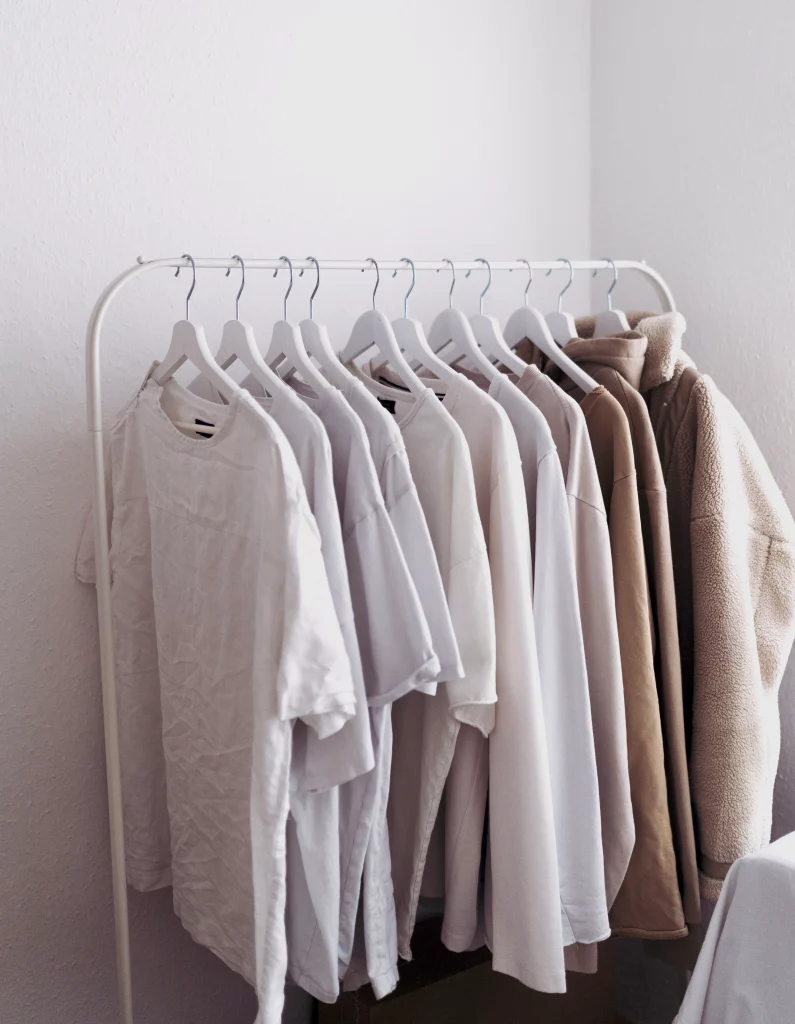 White clothes are stylish, however, when worn for a bit they may become grey, worn out looking, and dull. What is more, stains are extremely obvious on white fabrics.
White clothes are stylish, however, when worn for a bit they may become grey, worn out looking, and dull. What is more, stains are extremely obvious on white fabrics.
When cleaning white clothes, you should use heavy-laundry detergent and the hottest suitable water for the particular fabric (always check the care label for this information to avoid damage to the fibres).
You should always separate coloured clothes from whites since colour bleeding happens quite often. Use bleaching agents only when necessary and not on a regular basis – they will damage the fibres of the fabric and cause it to wear out quickly.
Yellowing is a serious issue with white clothes, and it can be caused by various factors, including excessive exposure to chlorine bleach, nicotine, chemical interactions from deodorant, and poorly stored items that react with external chemicals. Additional cleaning products may be required to restore yellowed garments, such as vinegar, borax, baking soda, bleach, commercial laundry whiteners, or bluing.
Extra tip: While whites should generally be washed with very hot water, this always depends on the fabric. Always check the care label of the fabric before attempting any kind of washing. While white cotton fabrics can be washed with hot water, wool, silk, and spandex cannot tolerate such high temperatures. Always make a different pile for white clothes that cannot be washed with hot water.
Here are the steps to take when cleaning white clothes:
- Separate the laundry – You should make separate loads. Separate your clothes into piles according to their colour, fabric, and washing requirements. All whites should be washed separately. That will prevent coloured fabrics from leaking dyes and leaving whites looking dull.
- Spot treatment – Before washing, treat all stains. Most types of stains react well to oxygen-based spot treatment. Whitening yellowed garments may necessitate a longer treatment. Soaking in a chlorine bleach mixture overnight will whiten, but it can harm clothes if abused. Oxygen-based bleach is a stronger and superior choice that is usually safer and may be used on all washable fabrics except wool and silk.
- Load the washing machine – Avoid overstuffing the washer. The fabric will require some space in order to move around and get properly cleaned. Make sure there is enough space in the laundry machine so that the water is able to flush the soil out of the fabrics.
- Pick water temperature and cycle – Use the hottest water suitable for the fabric (make sure you check this information on the fabric’s care label). Hot water will help remove body soil and other grime. Use your usual heavy-duty laundry detergent.
- Pick the suitable detergent for whites – Check the contents of an appropriate white clothing detergent; it should contain optical brighteners. These function by deceiving the sight by bending ultraviolet light waves to highlight blue light while decreasing yellow light, making clothes appear whiter. Keep in mind that using more detergent will not produce better results. In fact, excess detergent can linger in the fibres of the garment and attract dirt.
- Add vinegar to the rinse cycle – Once the laundry reaches the rinse cycle, add 1 cup of distilled white vinegar instead of commercial fabric softeners. A store-bought product can leave residue on the fabric and attract more soil in the future. The vinegar will help remove all of the remaining laundry detergent.
- Inspect the garments – Once the laundry is done, inspect all your clothes for any remaining stains. Do not ever place any stained garments in the dryer – the high heat will end up setting the stains and making them permanent. If you are not sure, allow the fabric to air dry before throwing it in the dryer.
- Air dry – It is best if you air dry your white clothes (especially outside). If you have a clothesline outside, hang your whites there. The sun will help brighten the fabric and keep it fresh for longer.
Extra tip: To whiten clothes without using bleach (chlorine or oxygen-based), add ½ cup of Borax or 1 cup of baking soda to each load. Those ingredients will help boost the performance and help with the brightening and cleaning of your white garments.
Extra tips on cleaning white clothes:
- Do not overuse chlorine bleach. While it can be effective in brightening whites and removing stains, constant exposure to the product will weaken the fibres of the fabric, cause it to become yellow, and tear.
- Do not use bleach and detergent at the same time. The two products can interact and make a toxic reaction.
- Keep in mind that if you live in an area with hard water, using bleach may cause your whites to become yellow as a result of a chemical reaction. If that is indeed the case, consider using oxygen-based bleach instead.
- If you are using chlorine bleach, be cautious when hanging the garments out in the sun. If any chlorine bleach remains on the fabric, a reaction will occur between it and the direct sunlight. That will cause the yellowing of your fabric.
